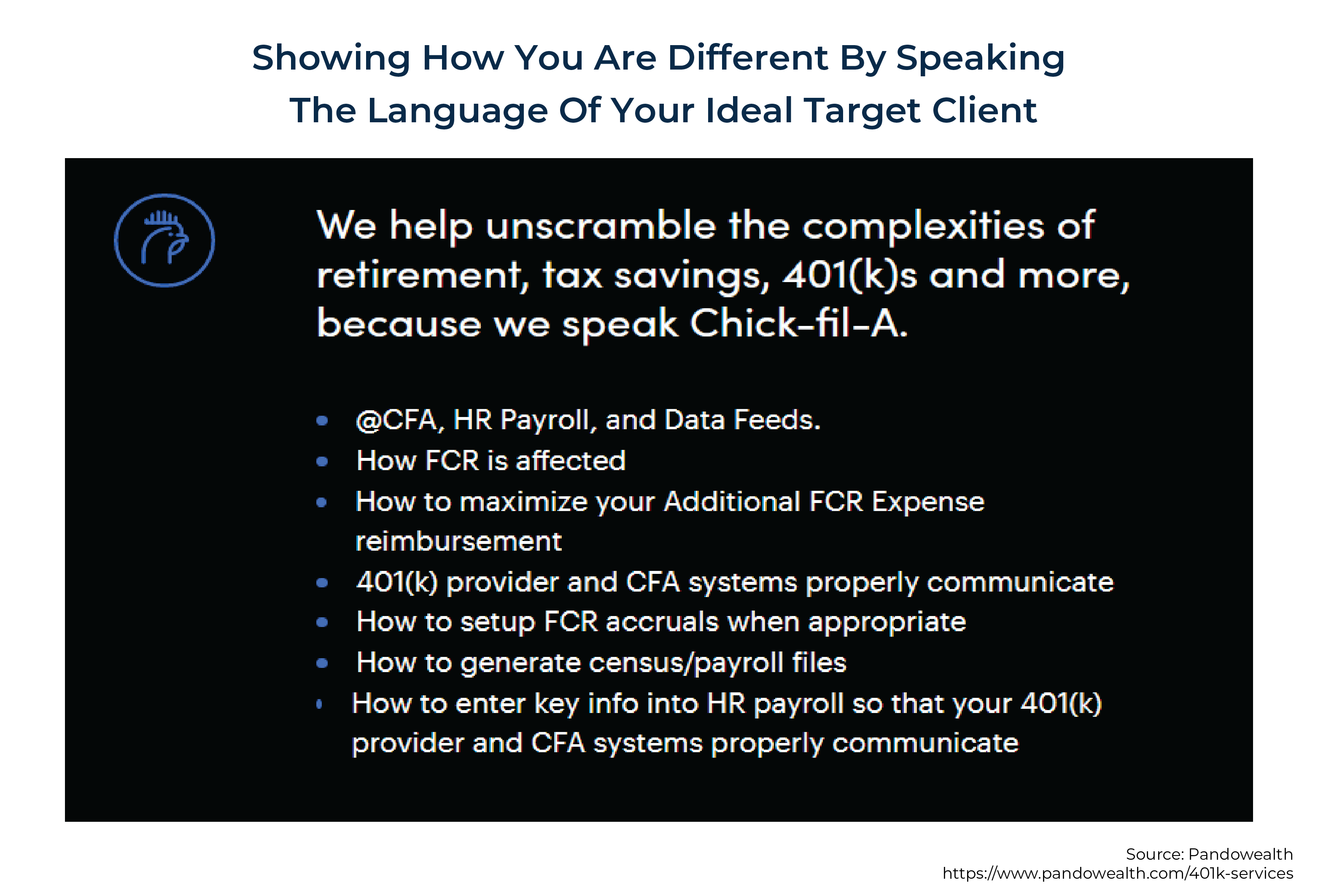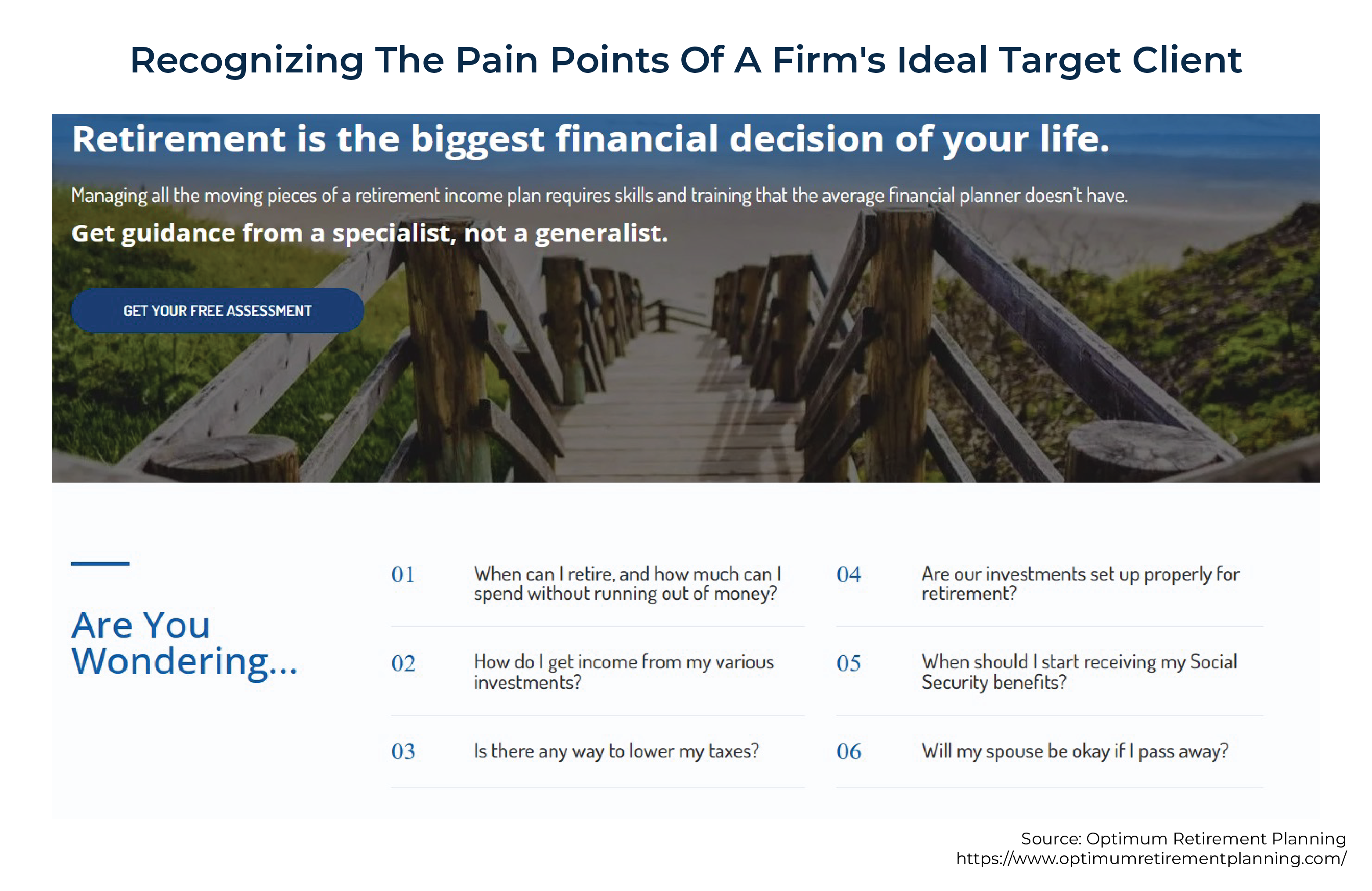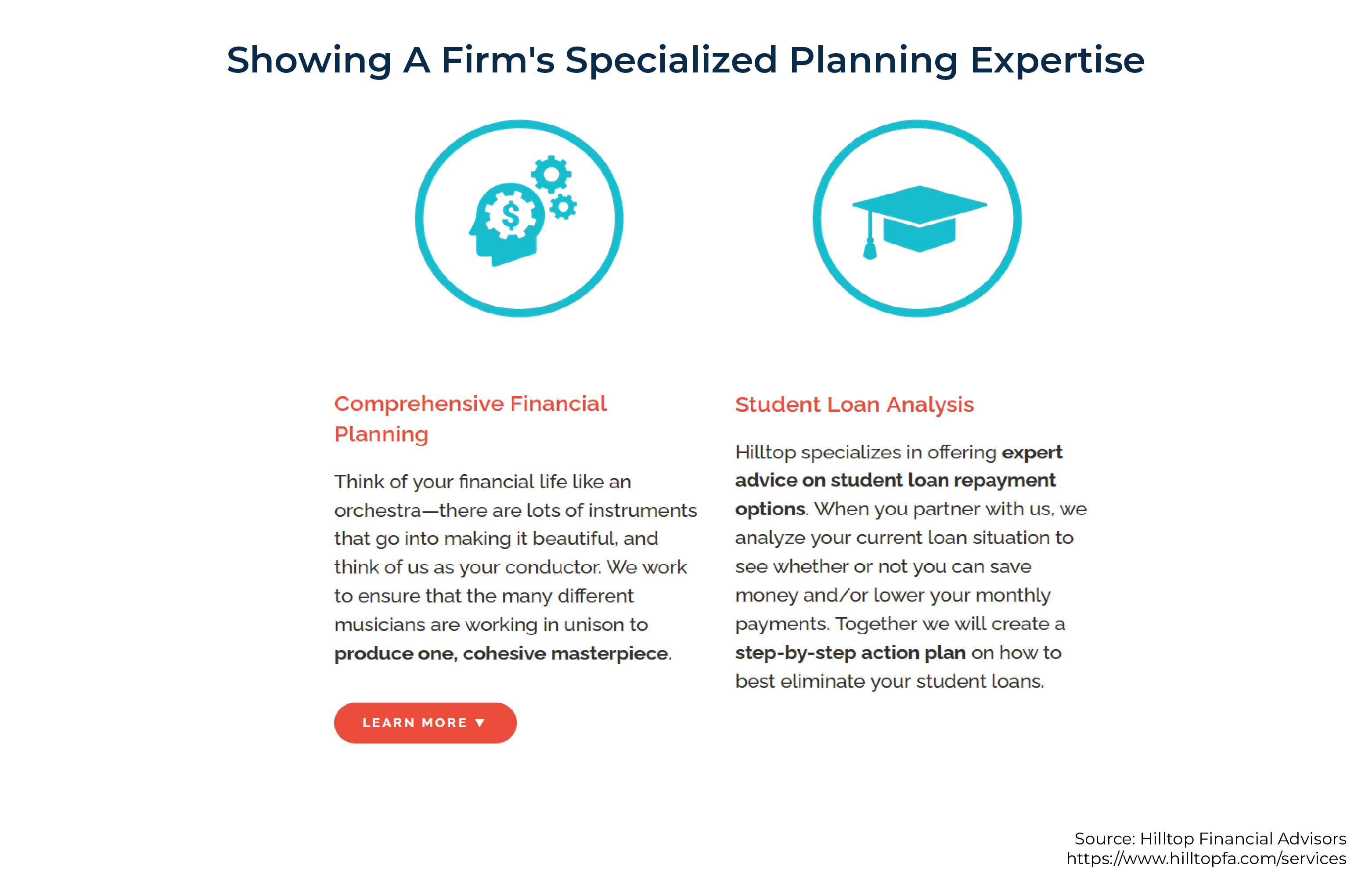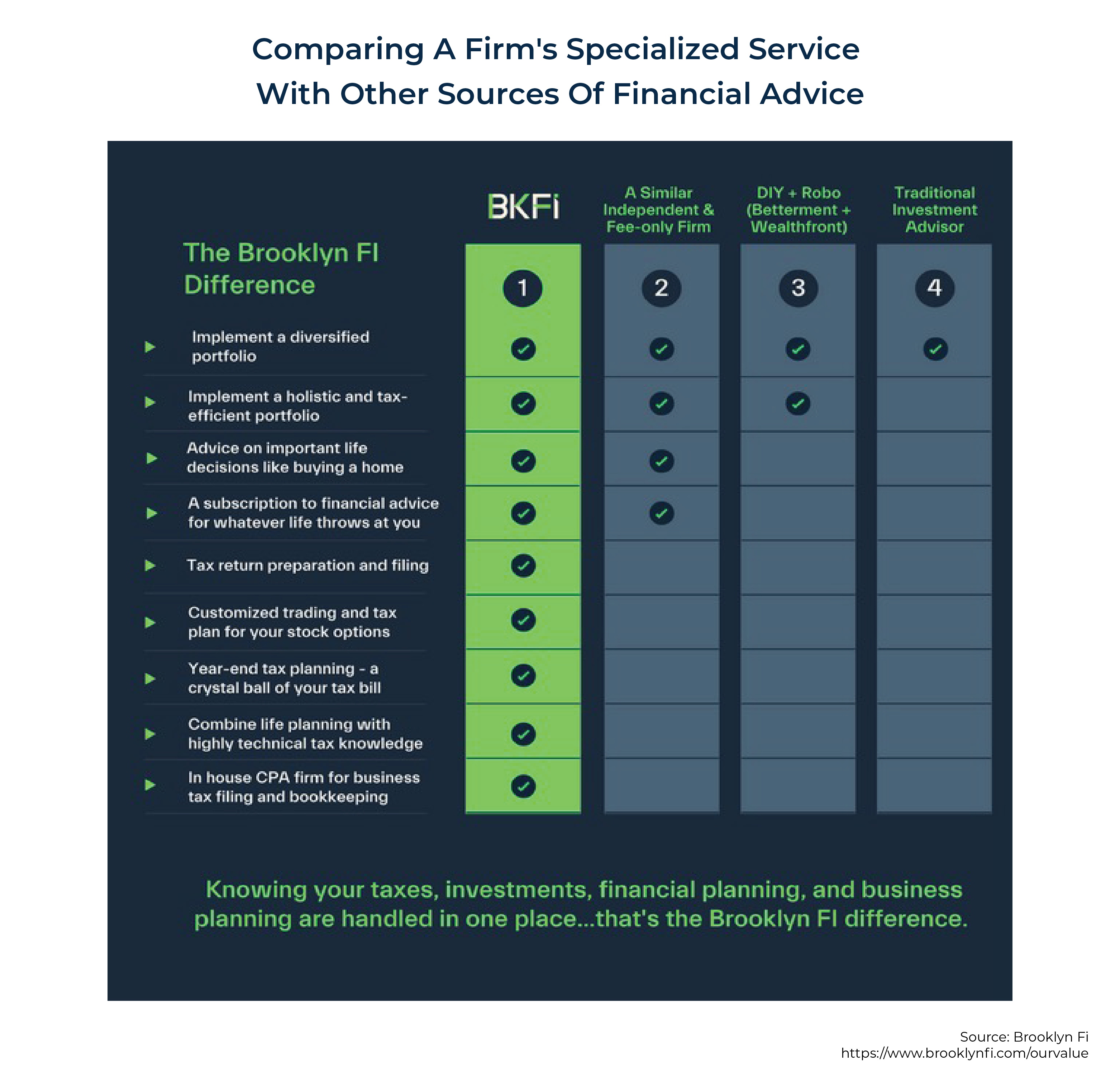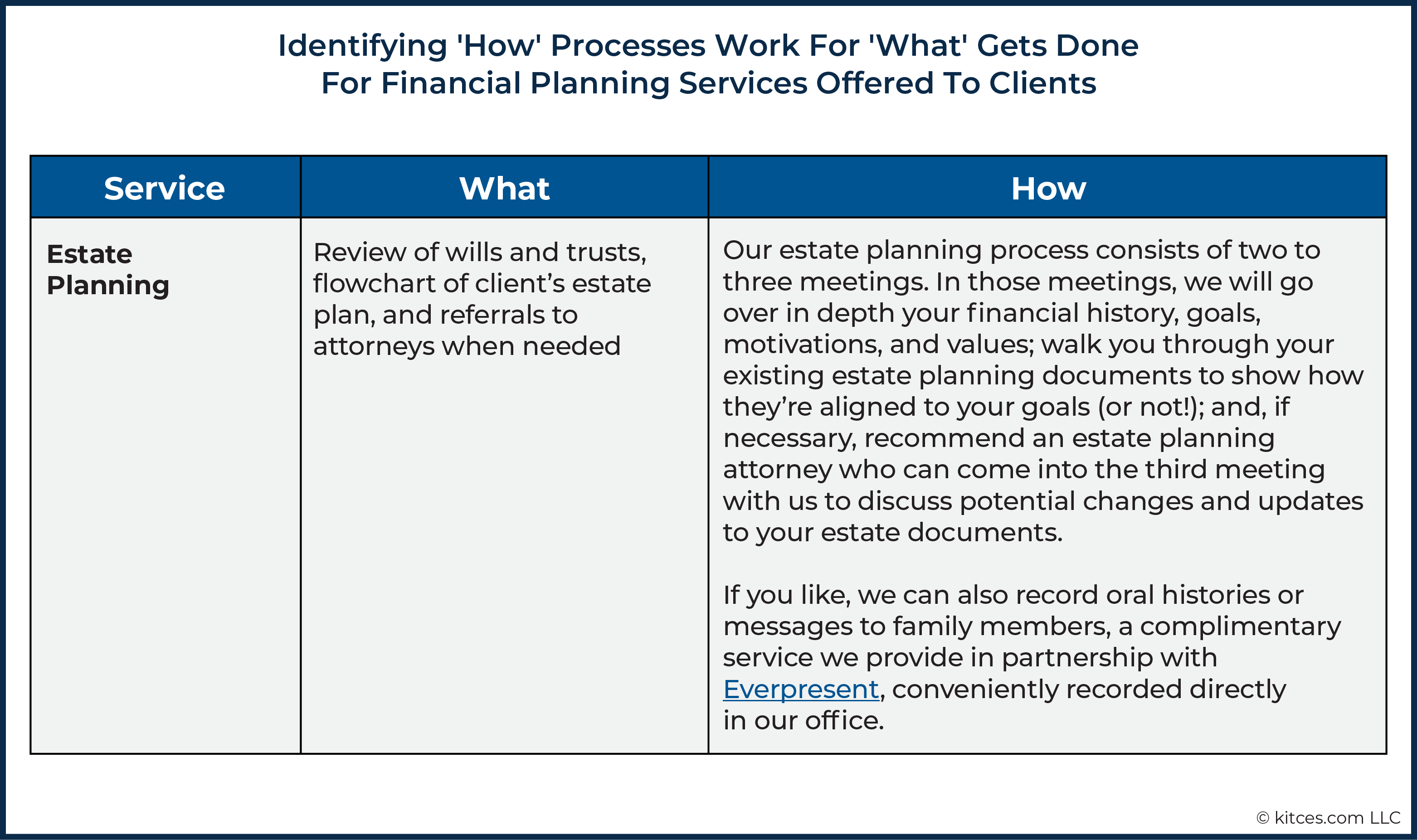Executive Summary
Consumers have a wide range of options when it comes to choosing a provider of financial advice, from larger wirehouses and asset managers to smaller Registered Investment Advisers (RIAs). Given that larger firms tend to have more substantial marketing budgets to attract clients, smaller firms and their advisors have had to look for alternative ways to differentiate themselves from the competition. Which led many firms to market all the ways they were 'better' than other sources of financial advice by highlighting their status as fiduciaries, fee-only advisors, or by offering (more) comprehensive financial planning services beyond investment management, as just a few examples.
However, while these attributes remain valuable for clients (and are worth highlighting), their value to smaller advisory firms as differentiators has eroded over time as what may have once been unique characteristics for these firms are now either increasingly common or have become harder to parse for consumers. For instance, even though RIAs are bound by a more stringent fiduciary standard, consumers might be unaware of the nuanced differences between that obligation and the seemingly similar requirements of broker-dealers under Regulation Best Interest. Similarly, consumers may struggle to understand the difference between a “financial plan” and a “more comprehensive financial plan” if they’ve never been through the financial planning process in the first place.
In this environment, another option for smaller firms to compete is to focus on how they are different, instead of marketing how they might be better than their competitors. And by using their website and other marketing materials to position themselves as different, smaller firms can demonstrate to their ideal target clients why they are the right choice for their financial planning needs.
Because the largest firms typically cast a very wide net when it comes to attracting prospective clients (whether in terms of age, profession, planning needs, or other factors), serving a client base with a narrower set of characteristics can help a firm stand out. Which means that if an advisor can demonstrate that they recognize (and can help solve) their ideal client's unique pain points, such prospects are likely to feel a stronger connection to the smaller, more targeted firm, and to believe that that small firm will be better understood by their advisor compared to a more generalist large firm with a bigger marketing budget.
Another way advisors can demonstrate how they are different is by explaining how, exactly, they do financial planning, and what specific services they provide for their ideal clients as a way to communicate their value. Because when a firm has an ideal client type, they often are able to go deeper into their clients' specific needs, and can communicate exactly how the process works to address those needs. This lets prospective clients know what to expect (and helps them understand the value they will be receiving in exchange for their fees!). This service specificity can be a differentiator for firms with ideal client types, as a firm that works with a broader client base will likely need to be more generic in its marketing, given that the planning needs of its clients will be significantly broader.
Ultimately, the key point is that while it has gotten more difficult for financial planning firms to show how they are better based on traditional characteristics such as being a fiduciary or providing comprehensive planning services, firms can shift their focus to emphasize how they are different and can meet the specific needs of their ideal target client as a way to adjust their marketing efforts. Which helps these firms attract more clients, and continue to thrive amidst competition from larger counterparts!
Consumers have a wide range of options when it comes to seeking financial advice, from larger wirehouses and asset managers to smaller Registered Investment Advisers (RIAs). Given that bigger firms tend to have more substantial marketing budgets to attract clients, smaller firms and their advisors have had to look for alternative ways to differentiate themselves from the competition. This led many firms to use marketing strategies to show how they were 'better' than other sources of financial advice. For example, for many years, RIAs' status as fiduciaries (charged with putting the best interest of their client ahead of their own) served as one way these advisors signaled how they were 'better' than wirehouses and other firm types (which did not face such requirements).
However, as many of these fiduciary and other differentiators have eroded over time (e.g., as some standards for the largest firms have risen), many smaller firms are facing challenges in marketing themselves as better than others to win clients in a competitive situation.
In this environment, another option for these firms is to instead focus on how they are different and not merely ‘better’, whether in focusing on a certain client type, offering unique services, or explaining how their planning process works. Because if the firm is substantively different, there is no way for the client to compare or shop on price; instead, they either do or don’t want the particular unique services that only that particular firm offers! And by using their website and other marketing materials to position themselves as different, smaller firms can demonstrate to their ideal target clients why they are the right choice for the prospective client’s financial planning needs.
Why Being 'Better' Is No Longer The Differentiator It Once Was
Financial planners face significant competition from other providers of financial advice when it comes to attracting clients, including some of the country's largest financial firms that typically have hefty marketing budgets they use to generate name recognition among consumers. Because of this, financial planning firms have often relied on marketing messages that demonstrate how they were 'better' than brokerage firms and other financial advice providers when it came to the depth and breadth of their financial planning and the quality of their advice.
For instance, RIAs are subject to a fiduciary standard requiring them to act in the best interests of their client at all times, which separates them from other non-RIA firms (e.g., wirehouses) who are not held to the same standard. And while consumers have not always understood the significance of the fiduciary standard (complicated by the fact that there are several different types of fiduciary advisors, depending on who defines the term, be it the SEC, Department of Labor, CFP Board, or other organization), many RIAs have used it as a way to signal how they are better than other firms, assuring clients that, unlike other firms, they will always endeavor to put the client's interest ahead of their own.
Another way some smaller firms have differentiated themselves is through their status as fee-only advisors. These marketing messages often emphasize how being a fee-only advisor not only provides a client with more clarity in terms of how much they are paying their advisor (e.g., compared to a commission-based advisor where the fees are baked into the investment products being sold), but also in how they can reduce potential conflicts of interest (because a fee-only advisor can be agnostic toward any specific investment product, they can choose from the full range of options to best meet their clients' needs).
Smaller firms have also tried to convey that they are better by demonstrating how they provide more comprehensive planning services compared to other types of firms. For example, an advisor at a wirehouse or insurance company might use the "calculator" approach to produce a less comprehensive plan by simply quantifying a client's needs to determine a suitable investment or insurance product (and then recommend products to fill those gaps), while an RIA (being paid for their advice itself) might go much deeper, producing a holistic financial plan that not only includes a cash flow analysis and covers investment and insurance planning, but perhaps also addresses retirement planning, tax planning, and estate planning, among other areas.
Why Traditional Differentiators Might Not Be As Effective Today
While smaller firms may have successfully persuaded clients and prospects that they are better than other firm types by leveraging their traditional differentiating factors (e.g., as a fiduciary, fee-only firm offering comprehensive planning services) over the years, the value of these differentiators appear to be eroding – at least in the minds of consumers.
For instance, Regulation Best Interest (Reg BI), issued in 2019, requires broker-dealers and their registered representatives to act in their clients' best interests at the time that they are making an investment recommendation by meeting 4 core obligations: disclosure, care, conflicts of interest, and compliance. Importantly, though, this "best interest" standard for broker-dealers only applies at the time the recommendations are made (and not to the overall broker-dealer business model or its ongoing relationship to the client), which means that broker-dealers and their registered representatives can tout that they act in the best interest of their clients. Which means that while RIAs are bound by a more stringent fiduciary obligation, consumers might be unaware of the nuanced differences in the obligations required of various types of firms.
Similarly, as large broker-dealers have recognized the potential benefits of recurring fee revenue to their bottom lines, many have moved beyond straight commissions to offer fee-based advisory accounts for their customers, increasingly replicating an AUM model that was once the sole domain of standalone advice-oriented RIAs. Because of this, RIA marketing messages emphasizing the firm's fee-only status might not be the differentiator they once were in the minds of consumers (e.g., those who might not understand the difference when most of what they pay to their brokerage firm is an AUM fee as well).
In addition, larger (non-RIA) firms have also upped their game when it comes to offering more comprehensive financial planning services (as opposed to just investment management), potentially eroding another differentiator with RIAs among consumers. Perhaps in response, some advisors may be trying to be better by providing even more comprehensive planning services, with Kitces Research on Advisor Productivity (2022) showing that 54% of advisors surveyed produced plans with at least 13 topics, up from 35% of such advisors who produced similarly extensive plans in 2020. At the same time, the research found that advisors and their teams not only spend more time producing these increasingly comprehensive plans, but they also do not appear to be rewarded for doing so, as these advisors reported lower median take-home income compared to advisors producing less comprehensive plans. In other words, financial planners are increasingly trying to differentiate by being “better” – more comprehensive – than other advisors, but are struggling to get clients to pay more for the additional advice services, resulting in a decline in profitability.
Altogether, while characteristics such as being a fiduciary, having a less conflicted revenue model built around fees, or offering comprehensive financial plans are all valuable, using these attributes to convey that one firm is better than another might not be as effective as it once was, as different types of firms now use similar messages in their marketing efforts (because they are still valuable qualities to communicate to consumers, even if they do not hold the same value as a differentiator as they once did!). And with so many firms touting similar value propositions, alternate approaches might help RIAs differentiate themselves from other sources of financial advice.
Demonstrating How A Firm Is Different Instead Of Better
While it has become more challenging for RIAs to convey how they are 'better' than other firms (e.g., in terms of being a fiduciary or a fee-only firm), there are still ways for them to separate themselves from the pack. For example, instead of describing how they might be 'better' than competitors, a firm could instead focus on the particular types of clients they serve, their specific planning expertise, or the unique ways they may do planning for their clients. Or, as brand guru Sally Hogshead says in her book, "How The World Sees You":
Different is better than better. Different doesn't try to turn you into something else. Different allows you to highlight the singular traits you already have within you. You aren't necessarily better than your competition. But you are already different.
First, firms can choose to show how they're different by focusing their marketing messages on the needs of their ideal client type (i.e., the demographics, behavior patterns, motivations, as well as goals and financial details of the clients the firm would like to serve). Because the largest firms typically cast a very wide net when it comes to attracting prospective clients (whether in terms of age, profession, planning needs, or other factors), serving a client base with a narrower set of characteristics can help a firm stand out. In other words, the largest firms in the country – that are trying to get thousands or tens of thousands of new clients every year – have to cast a wide net, and are never likely to try to meaningful compete with an advisor who focuses on a more specialized clientele like local dentists, or airline pilots, or tech employees going through an IPO with a particular up-and-coming firm (where the advisor can be wildly successful with no more than 50 great clients, far fewer than what the large firm would consider viable at their size).
Which means an individual advisor or small firm have an opportunity to demonstrate that they recognize (and can help solve) their ideal client's unique pain points in a far more targeted manner than a large firm ever could. Such that a prospect that fits the firm's ideal client persona is likely to feel a stronger connection to the firm, and believe that they would be more understood by the advisors, at least in comparison to their reaction when exposed to more generic firm marketing messages.
Example 1: Bon Voyage Financial is an RIA whose ideal clients are pre-retirees and retirees who frequently travel internationally. For many years, the firm has used the marketing message "Comprehensive financial advice that puts your best interests first".
Recently, though, the firm determined that it wasn't gaining as much traction with prospective clients as many of its competitors were using similar messages.
To help attract more prospects, the firm decides to target its message to its ideal client, changing its message to "Helping world travelers create financial and travel plans that support their ambitions for adventure in retirement".
Another way firms can show how they are different instead of better is by marketing based on the specific planning specialization(s) they can offer their ideal target client. Because larger firms typically work with a broad range of client types, a given advisor might not have expertise regarding the specialized needs of a particular client.
For instance, while a client who is a doctor might share many of the same planning needs as other clients (e.g., cash flow and investment planning), they will also have specific needs (e.g., student loan repayment strategies or liability insurance coverage) that could benefit from the expertise of an advisor who works with similar clients and handles these issues regularly. Which means that smaller firms can have an advantage by crafting marketing messages that signal how they have unique expertise in the needs of their ideal target client.
Example 2: Continuing the example of Bon Voyage Financial from Example 1, the firm is now considering how it might communicate its service offering to show how it is different than other firms and attract more clients that fit its ideal client persona.
Instead of focusing on the broad planning areas that it covers (e.g., investment planning and insurance planning) that are similar to other advisors offering comprehensive planning services, the firm also includes language on its website emphasizing its specialized expertise in working with clients who travel abroad frequently, from ensuring they will have proper health insurance coverage to maintaining a database of the best tour operators in a variety of countries.
A third way advisors can show how they are different is by communicating their value by explaining how they do planning for their clients in addition to what services they provide. Because when a firm has an ideal client type, they often are able to go deep into their specific needs and can communicate exactly how the process works to address those needs so prospective clients will know what to expect (and can start to see the value they will be receiving in exchange for their fees!).
This can be a differentiator for firms with ideal client types, as a firm that works with a broader client base will likely have to be more generic in its marketing, given that the planning needs of its clients will differ significantly.
Example 3: Continuing the example of Bon Voyage Financial from Examples 1 and 2, the firm is considering ways to better communicate how its planning process is different from other firms.
Bon Voyage currently advertises that it helps clients identify goals and create comprehensive financial plans to help meet them, but as part of its process of differentiating itself from other firms, the firm changes its messaging not only by highlighting what its full planning process looks like (e.g., by including a client service calendar specific to the needs of its ideal client) but also by explaining how specific services work (e.g., reviewing the best banking options for clients who spend a significant amount of time abroad and helping clients identify the credit card that can best help them earn points and miles for their next trip).
In sum, firms can choose from several potential ways to show how they are different and not just better than other firms, from the type of clients they serve to the specialized services they offer and how they perform them (and while a firm might have several differentiators, even having 1 thing that makes the firm different can allow it to stand out, as it will offer a value proposition that its target client will have a hard time finding elsewhere!). The next step, then, is to explore ways to communicate these differentiators to prospective clients on the firm's website or in other marketing materials.
Showing How A Firm Is Different On Its Website
As discussed earlier, firms have a variety of options to show how they are different, depending on whether they are focusing on an ideal client type, specific planning expertise, their planning process, and/or another differentiator. And once a firm decides how it is different, it can then apply this new messaging in its marketing, including on its website using both text and graphical elements, which can help prospective clients see how the firm is the best option to meet their needs!
Explaining How The Firm Understands Its Ideal Target Client
Identifying an ideal target client opens up the opportunity for a firm to tailor its website to these particular clients' needs. This process first involves intimately understanding the unique circumstances and pain points of their target client, and then communicating to prospective clients that the firm understands their specific needs.
One way to do this is for firms to use the same language as their target client. For example, Pandowealth specializes in working with Chick-fil-A operators and support center staff. Its website includes company-specific terminology that its target clients recognize (and is the type of language that a more generalist firm almost certainly would not recognize), helping to differentiate it from other firms.
Notably, a very specific niche (like the employees of a particular company) is not a requirement to speak the language of a firm's ideal target client. For instance, not only can a firm communicate that it specializes in working with a certain client type, but it can also show that it recognizes the financial pain points of this group.
Below, the website of Optimum Retirement Planning communicates clearly that it specializes in working with individuals contemplating (or in) retirement and that it recognizes many of the questions prospective clients in this position likely have. So while many financial advisory firms work with pre-retirees and those in retirement, this firm is showing that it understands their clients’ needs and has the expertise to address their specific concerns (rather than ‘just’ offering “comprehensive plans” or “investment management”).
Highlighting Specific Planning Expertise
Firms can also differentiate themselves by explaining how they have unique expertise in the planning needs most important to their ideal target client. Notably, firms do not have to demonstrate specialized expertise in several different planning areas, but rather just in those areas most important to their target clients.
For instance, Hilltop Financial Advisors, a firm that specializes in working with "rising professionals and growing families", provides specialized student loan analysis (a key service need for many young professionals that more generalist firms might not be able to perform with the same level of depth) and displays this prominently on its website (alongside its broader comprehensive financial planning services).
Firms can even consider communicating explicitly how their service offering is unique compared to more generalist firms. For instance, Brooklyn Fi, which specializes in working with tech professionals and creatives, offers tax planning services that go beyond what is offered at a more generalist firm (as their clients often face tricky tax situations like equity compensation planning or tax issues related to being self-employed). On its website, Brooklyn Fi makes this clear through a graphic showing that while some of its services are offered by other types of firms, it offers certain services (e.g., an in-house CPA firm) that most other firms do not. In this way, Brooklyn Fi is able to show its target clients how it is different than other types of firms and is well-positioned to meet their needs.
Communicating The 'How' Of Planning
Another way for firms to differentiate themselves is to explain the 'how' of planning in addition to what services will be provided. Because many firms offer comprehensive financial planning services, actually showing prospective clients what this entails can help a firm stand out (particularly if the planning process is tailored to the unique needs of its ideal target client).
For example, a firm specializing in advanced estate planning strategies (perhaps for an ideal target client with a family business) might emphasize not just that it will review key estate documents and work together with the prospective client's estate attorney but that it will also go further into the how of what that process looks like.
Another way to show the how of financial planning is through the use of client service calendars, which can be tailored to a firm's ideal target client and the specific services that the firm offers. This can demonstrate the initial and/or ongoing value the firm provides for clients and how it does so. For instance, instead of putting more generic services like an insurance review or an investment review on a service calendar, a firm specializing in working with doctors can highlight the doctor-specific services it offers.
Ultimately, the key point is that while it has gotten more difficult for financial planning firms to show how they are better based on traditional characteristics such as being a fiduciary or providing comprehensive plans, firms can actually focus on how they are different – instead of better – and how they can meet the needs of their ideal target client. Which could help smaller RIAs to attract more clients and continue to thrive even amidst the "Great Convergence" of services and standards with other firm types across different industry channels!


